This article breaks down the topic of pathway lights into smaller, easier-to-understand chunks. Here is everything you need to know before buying LED path lights.
What is Pathway Lighting?
Pathway lighting is an outdoor illumination technique where you light up a narrow strip of land from one end to the other. Pathway lights are typically used for garden walkways, front yard pathways, countryside paths, etc. The goal is to provide nighttime safety and increase the area’s visual appeal.

Pathway lighting is a broad and diverse illumination field compatible with several types of LED light fixtures. As we will see further down this article, this is a very versatile lighting approach with every element being customizable.
The only two criteria for path lighting are a narrow road and a light source. However, the criteria for good path lighting is a more complex endeavor.
Why are LED Pathway Lights Important?
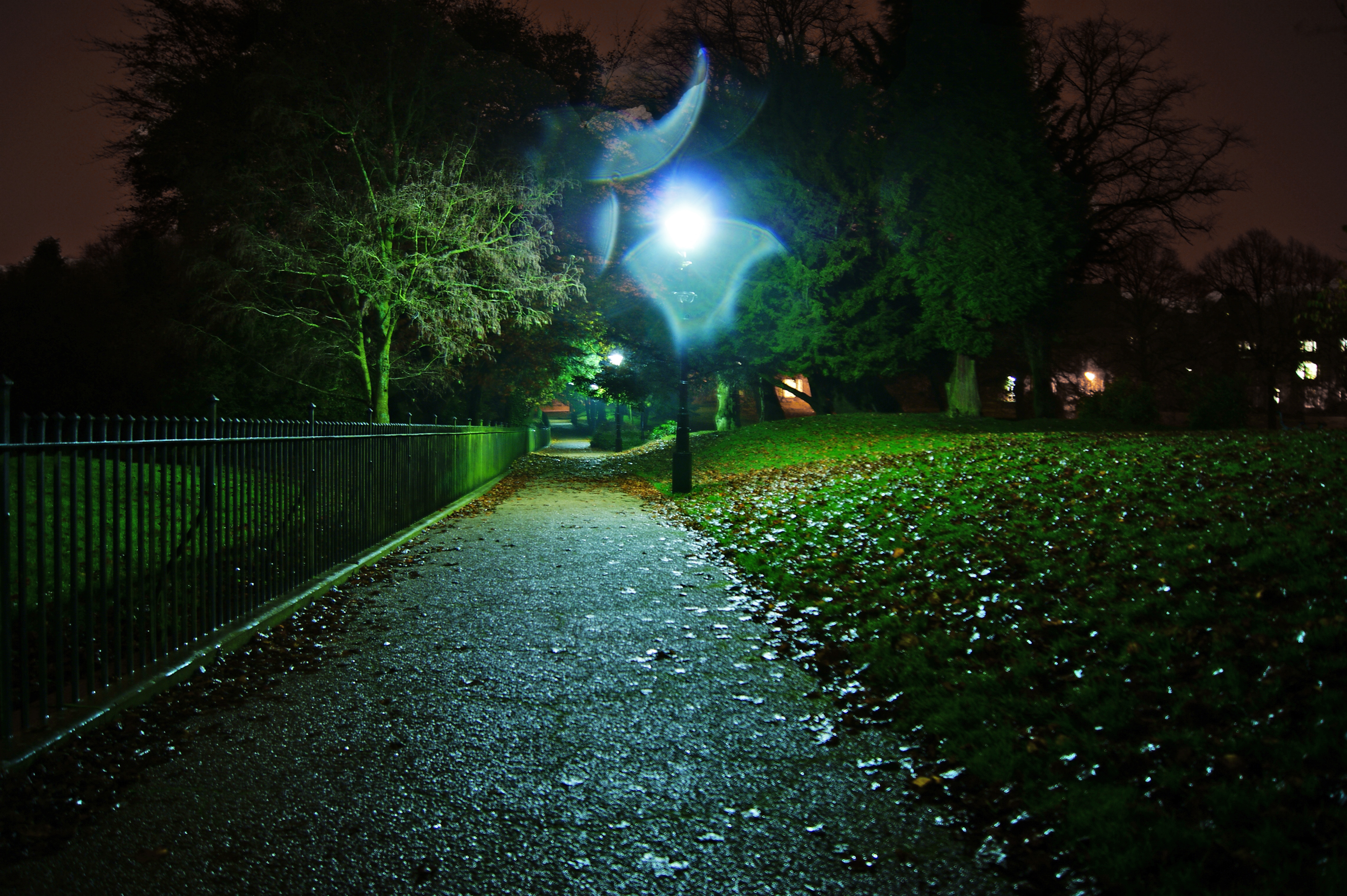
Pathway lights are a necessary part of any modern society. Nighttime illumination has become one of the most critical elements in our lives. Though several factors contribute to the importance of pathway lights, here are some of the most prominent ones.
Safety
Path lights provide a soft and gentle glow to your walkways and gardens, preventing unforeseen accidents. The following are just a few pathway LED lights’ most common safety benefits.
- Illuminate potential puddles, potholes, or uneven terrain.
- Provide indirect ambient lighting to nearby bushes and trees.
- Provide a light boundary to the pathway for visually impaired persons.
- It can automatically turn on when the sun sets.
- Pathway LED lights typically run on 12v, a much safer operating voltage.
Efficiency
LED lights have the highest energy efficiency of any illumination device. Low-wattage units consume very little energy and match the brightness and longevity of competing light sources. Generally speaking, LED lights are the best option for modern outdoor lighting solutions.
For large outdoor spaces, you will need several LED light fixtures for complete coverage. The difference in power consumption between a single LED and non-LED light is relatively small. But that difference will snowball as you add more light fixtures to your pathway.
Durability
LED lights are insanely durable thanks to their flexible casings and lightweight. Traditional fluorescent lighting is fragile and can easily break under strong or stormy winds. Additionally, the glass housing for filaments is quite susceptible to thermal shock.
Thermal shock occurs when an object experiences extreme heat and then immediate cooling. The heat from inefficient incandescent bulbs followed by cold rain can easily shatter the glass housing.
LEDs are much more resilient and have a wider operating temperature. The base of a LED light fixture is made from sturdy aluminum, with the diffuser commonly made from flexible polycarbonate. Outdoor lighting generally comes with some form of IP-Rating. IP-Rating is an ingress protection standard that tests products and assigns them dust and waterproof rating.
Versatility
Pathway lighting is a general technique that comprises several lighting styles and combinations. Utilizing this versatility, you can create entirely new and unique lighting aesthetic for your pathways.
The best part of LED lights is their customizability, and you can get custom-designed fixtures that match your design goals. You can also use different lighting fixtures for different areas of your walkway.
Finally, if you want even more control over your lighting design, there are several LED lighting variables that you can change and optimize to your heart’s desire. Customizable elements of LED lights include the following variables.
- Beam Angle
- Power Consumption
- Fixture Height
- Fixture Spacing
- Color Temperatures
- Etc.
Visual Appeal
Traditional lighting solutions have a unique look but are very limited in their applications. That soft, warm light is ideal for outdoor dining, but it is generally bulkier and has an overall less customizable design.
On the other hand, an LED (light emitting diode) is relatively small, usually less than 1 in. square in size. These lighting elements can be installed in slim, minimalist fixtures that provide the same, if not higher quality light, in a much smaller package.
Additionally, you can get LED lighting fixtures with several material finishes. Matte, glossy, and chrome are commonly found outdoors, but you can also get wood, copper, or nickel options.
Accent Lighting
Pathway lights also serve an essential secondary purpose aside from safety and illumination. Accent lighting is the process of highlighting a structure or area to enhance its natural shape and aesthetic. Path lights can be oriented to provide directional light to surroundings and indirect light to the pathway.
For gardens and front yards, accent lighting can help highlight nearby trees and flowerbeds. Commercial buildings like hotels and resorts can utilize directional lighting to illuminate fountains and pool boundaries. Though less common, pathway lights can also be used for perimeter lighting.
How to Choose the Best Pathway Lighting Design?
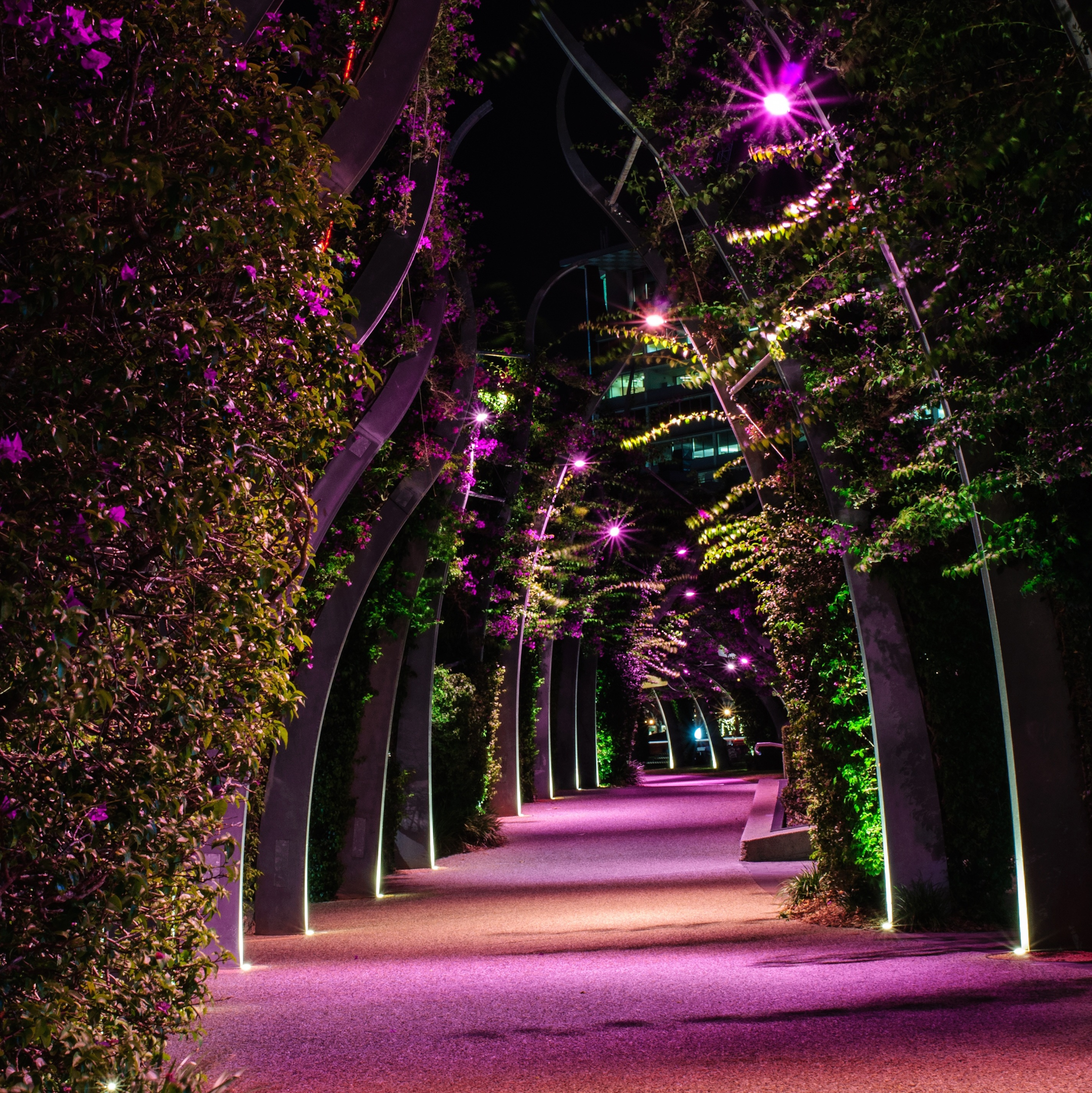
So far, we have discussed the importance and benefits of pathway LED lights. But now, let’s move on to the design and setup phase. Choosing a good pathway lighting design is a complex and challenging process. Most of the choices are dependent on personal taste and design aesthetics.
Step 01 – Lighting Location
First, you must analyze your outdoor lighting space. Pathway lighting fixtures vary by application; garden path lights are incompatible with asphalt path lights. The state of your installation ground, common outdoor weather conditions, and distance from an electricity distribution box all play an essential role in selecting a lighting design.
Everyday use cases for pathway lights are as follows.
- Garden Path Lighting
- Front Yard Pathway Lighting
- Step Lighting for Staircases in the middle of the Pathway
- Safety Lighting for Canal Bank Walkway
- Countryside Walkway Lighting
- Driveway Lighting
Driveways are generally not counted under the umbrella of pathways. But the lighting system is practically the same. Hence, their inclusion on this list.
Step 02 – Aesthetic Design Choices
Once a location is narrowed down, you can move on to the fixture design. Pick a light fixture design that best compliments your outdoor space. A design aesthetic is a personal choice and purely art and emotion-driven.
This step combines several factors, some of which we have discussed above. Housing customization, fixture material finish, light brightness, number of lighting fixtures, etc., should all be considered before making a decision.
Some common LED lighting styles are listed below to give you a better idea. But by no means should these recommendations be considered compulsory. Feel free to tweak these styles according to your needs.
Modern Aesthetic – Use slim and artistic lighting fixtures as outdoor sculptures.
Hidden Lighting – Use recessed and in-ground lighting fixtures to hide undesired elements.
Rustic Lighting Style – Rustic style involves using warm LED bulbs that mimic an incandescent look.
Minimalist Approach – Minimize the presence of your LED fixtures by using simple shapes and compact designs.
Step 03 – Power Consumption
Your house or building’s electricity setup should have enough power output to match the needs of your pathway lights and then some. Power consumption is an important step. Without it, your LED lighting project can run into various problems down the line.
To calculate the total amount of electricity required, you need to get a rough estimate of your required fixtures. Look at the individual light’s power rating and make further calculations accordingly. You should have an overhead of at least 10% as a contingency.
If your lighting design exceeds the building’s power output, you need to contact an electrical contractor for additional wiring and power distribution work. Alternatively, you can try to reduce the number of fixtures or select units with different wattages.
Step 04 – Light Coverage
Light coverage is a metric to determine the total area illuminated by any given LED fixture. Light coverage can be adjusted based on three factors, beam angle, wattage, and placement.
- Beam angle determines the sideways light coverage of a fixture. Wider beam angles will improve coverage, but the light will fade towards the outer edges.
- Higher wattage will result in brighter LED lights, increasing the front side coverage area.
- LED lights should be placed so that the faded edges of the light source overlap. If the lights are too close, it will create uncomfortable bright spots and glare. Contrarily if your lights are too far apart, it will result in dark spots between fixtures.
Proper LED lighting coverage will help maximize the benefits of LED lights and even help you reduce your electricity bill.
Step 05 – Color Temperature
Color temperature refers to the slight hue inherent to LED lights. This attribute is measured in Kelvins; higher values lean towards a cool blue hue and lower values towards a warm yellow.
A warm light color represents a pleasant, cozy environment and is best suited to outdoor mood lighting. Cool lighting provides better visibility and is best suited for safety-related applications.
You can also combine the two lighting styles to find a good balance or go for a more neutral color temperature. A Neutral LED hue is designed to match the look of natural sunlight as closely as possible.
Another metric used to measure light color is CRI (color rendering index). It is a numerical representation of object color accuracy under synthetic lighting. CRI is a linear scale ranging from 1 to 100, with a rating of 100 presenting the most accurate object color. This rating can only be achieved using neutral-colored LEDs.
Step 06 – Installation Feasibility
Installation feasibility is a final on-site assessment of the lighting location. This step involves selecting mounting options, ground (or soil) assessment, determining wiring paths, and electricity transformer solutions.
Though you can assess the installation feasibility yourself, it’s advised that you consult your lighting supplier and electrical contractor for this step.
Step 07 – Cost Analysis
The final step of any lighting design involves an in-depth cost analysis. This is a complex and challenging process that is dependent on several variables. Everything from shipping costs to tax and customs can affect your overall path lighting costs.
Your electricity cost analysis will also vary based on location and local electricity costs. A separate section below discusses the cost of pathway lighting in more detail.
Which Pathway Lights Should You Buy?
LED lights have a wide variety of enclosures that have their pros and cons. The selection process for light fixtures is heavily application-dependent. Below are a few popular options for pathway lights.
Bollard Lights
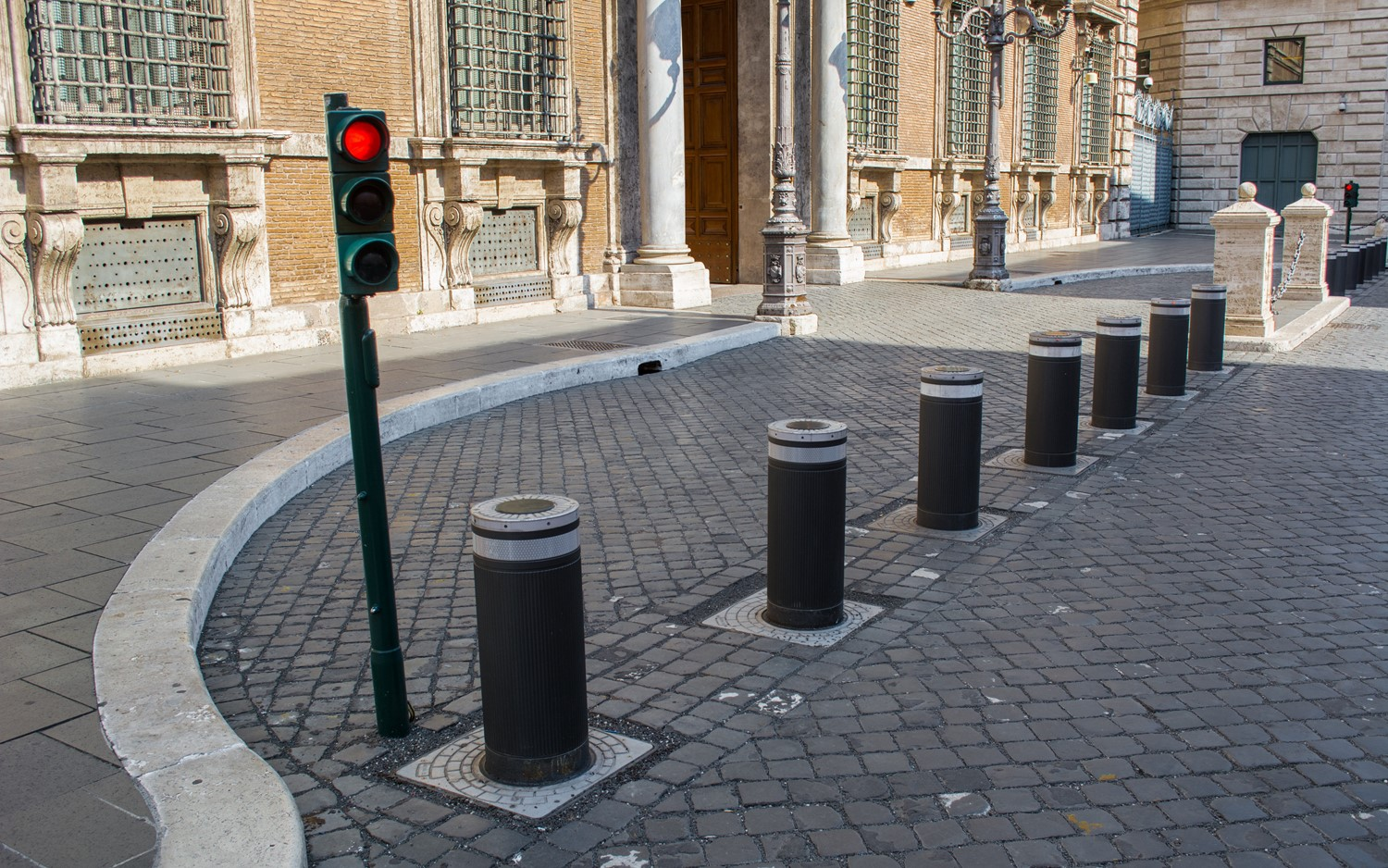
Bollard lights are vertically mounted light poles and popular outdoor pathway lighting options. These fixtures are incredibly robust and often preferred for street-side pathway lighting. Bollard lights prevent cars from running onto walkways and keep citizens safe.
Another application for bollard lights is to dissuade people from walking on grass. But many prefer bollards because of their unique look and design.
Step Lights
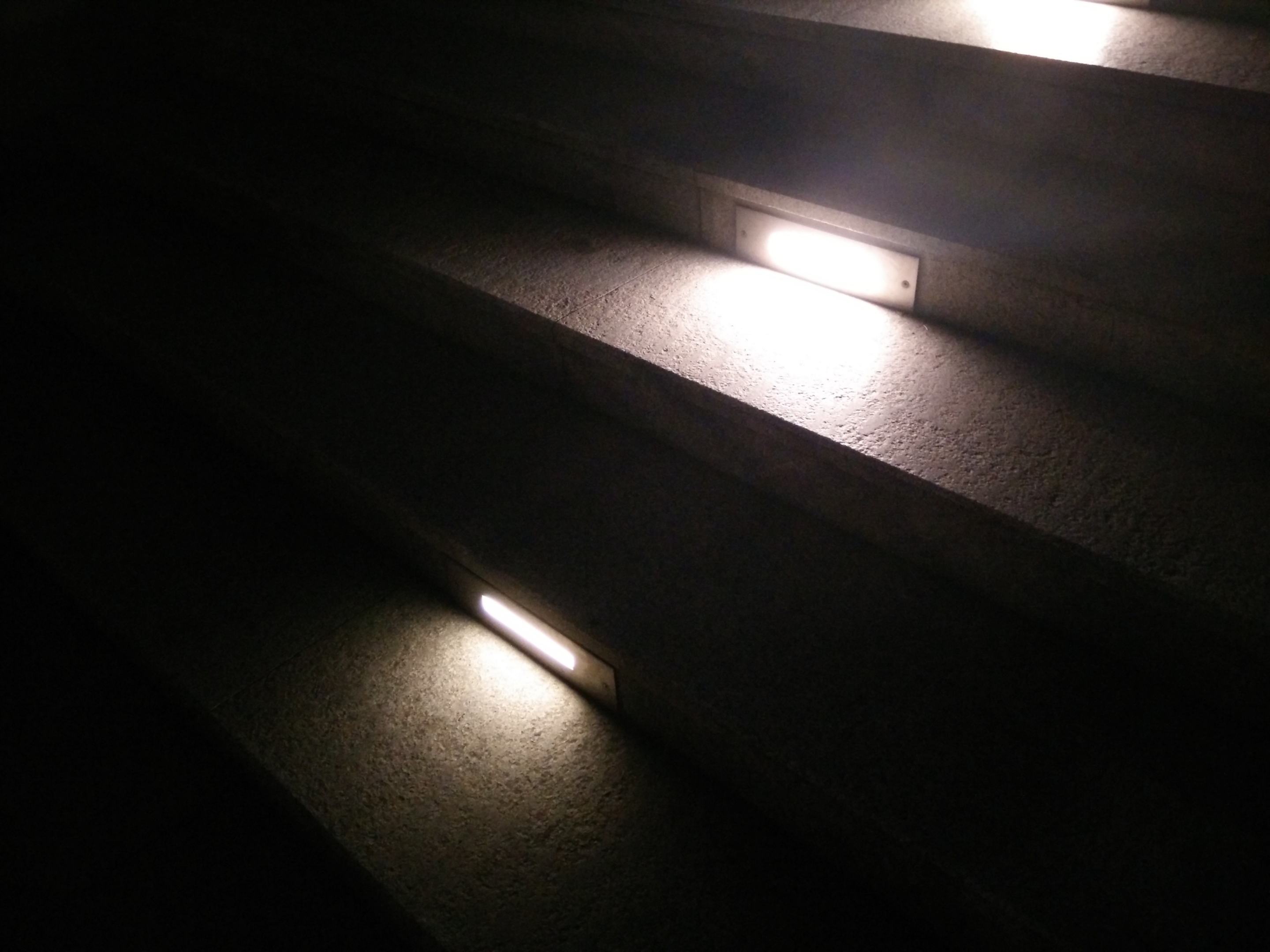
Step lights are small recessed fixtures often installed inside the steps and provide direct light to footholds. Poorly lit steps can be a natural safety hazard, and the only way to avoid accidents is to use step lights and illuminate each step individually.
If you wish to avoid the complicated process of using step lights, you can use ambient solid light as a replacement.
Spike Lights

Spike lights are small spotlights mounted on a vertical spike that can be easily pushed into soft ground. These fixtures are ideal for garden pathway lighting, as they are easy to install and can be quickly re-positioned to match any future changes in your garden.
A key element to consider before choosing spike lights is their limited application. By their design, they can only be installed at a low position on the ground.
Spot Lights

Spotlights are directional fixtures that can be mounted on nearly every surface and later adjusted according to user needs. These fixtures are excellent options for accent lighting, and their versatility is top-tier.
Post Lights
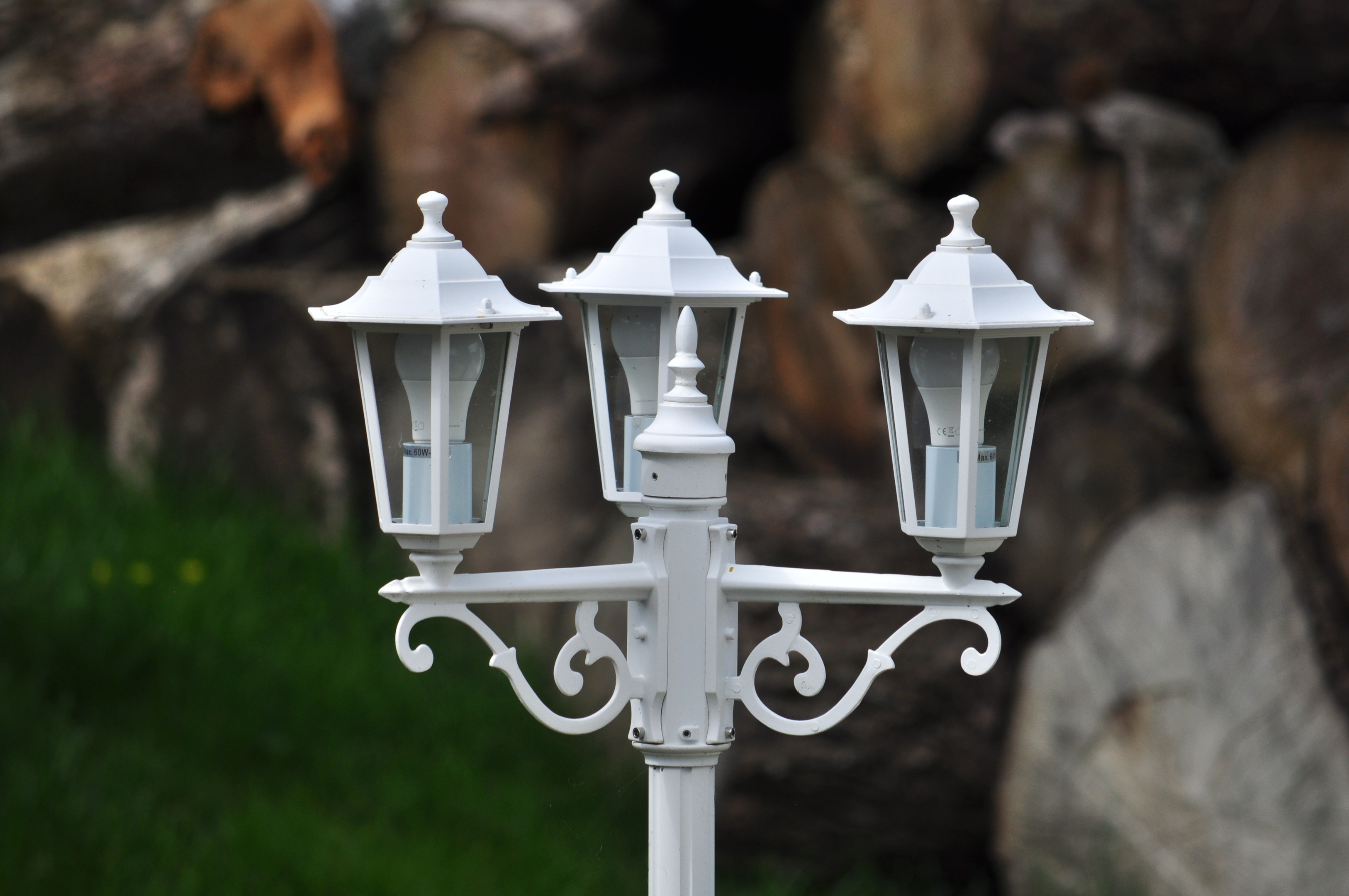
Post lights are large light poles that are commonly used as street lighting. Their larger size results in a natural light diffusion as it hits the ground. Post lights have the highest area coverage per unit of any LED fixture.
Non-Traditional Lighting Options
Pathway lighting is generally limited to a few popular options. But some creative, non-traditional lighting approaches could benefit your outdoor space.
Flood Lights – Ideal for uniform ambient light across your front yard.
LED Strips – Can be used for linear illumination flanking both sides of the pathway.
In-Ground Lights – Use waterproof fixtures and embed them in the ground for a clean look.
Popular Ideas for Pathway Lights
Here is a brief list of popular lighting ideas for your pathway lighting setup.
Combination Lighting
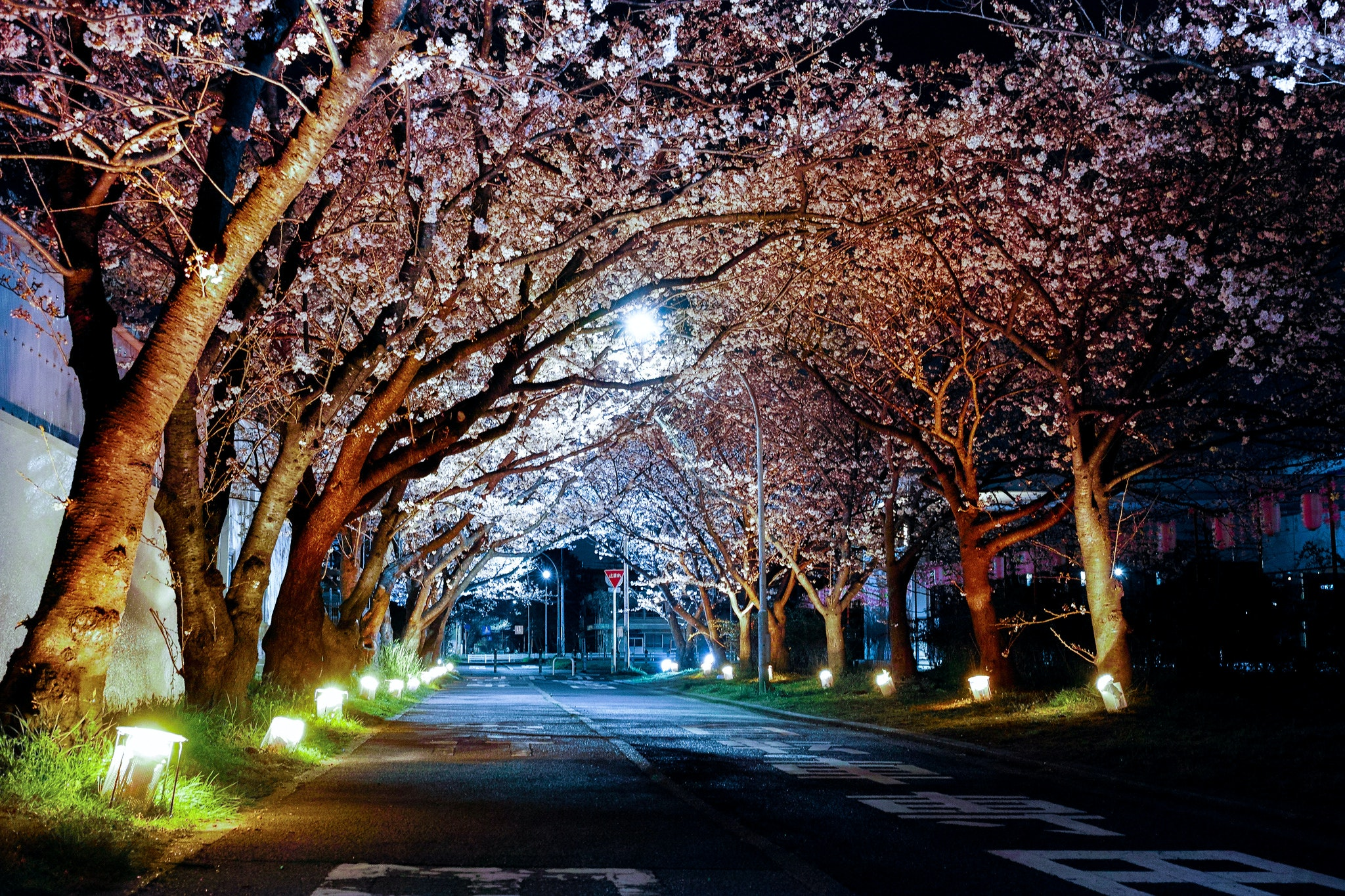
Use a combination of different lighting designs and fixtures for a more even coverage of the area. You can use flood lights for constant ambient lighting and rely on post lights for accent lighting.
Motion Sensors
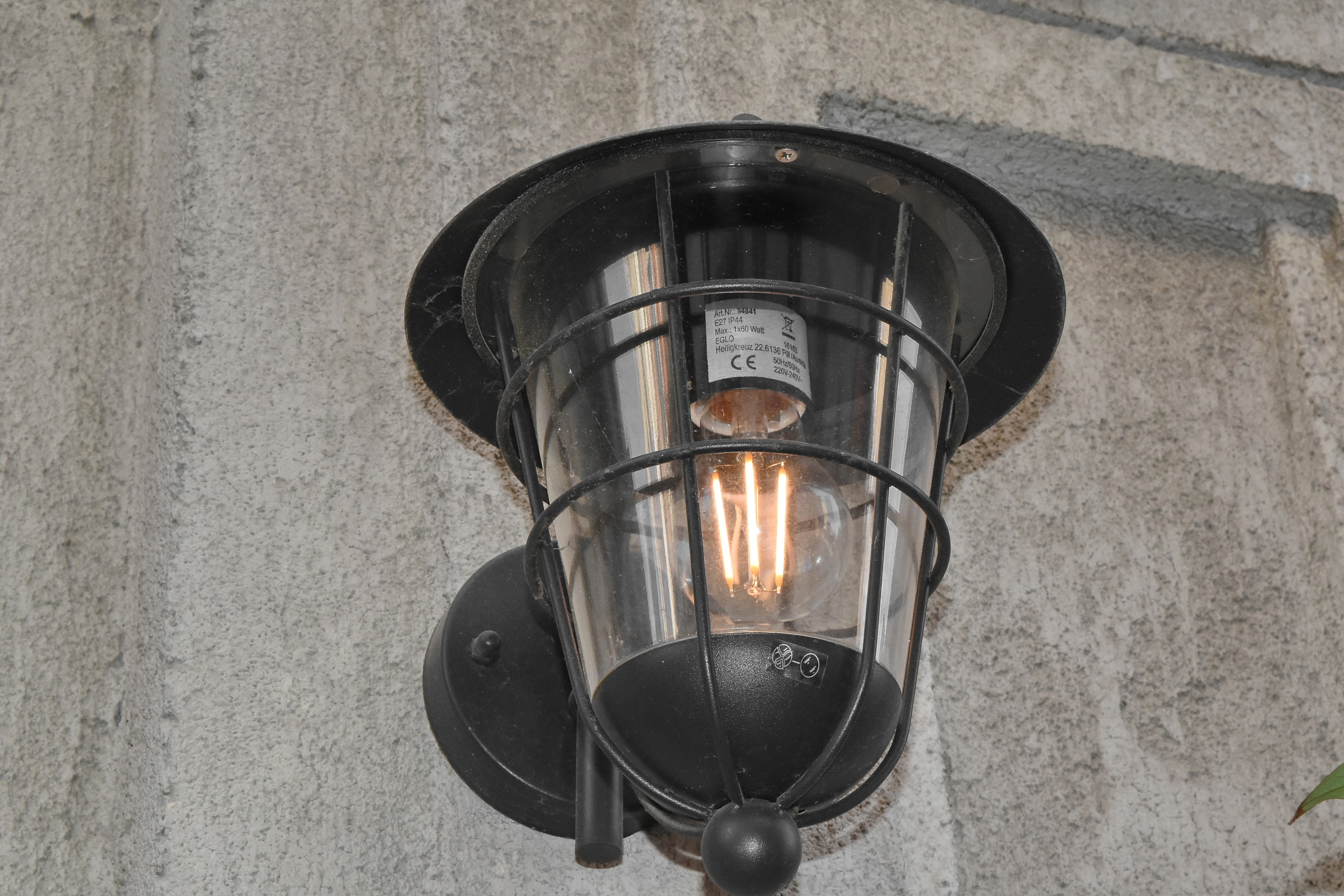
Motion sensors can be assigned to pathway lights that automatically turn on when they detect a person. This is a quick and efficient way of turning on path lights. However, its use may vary from application to application.
Solar Path Lights
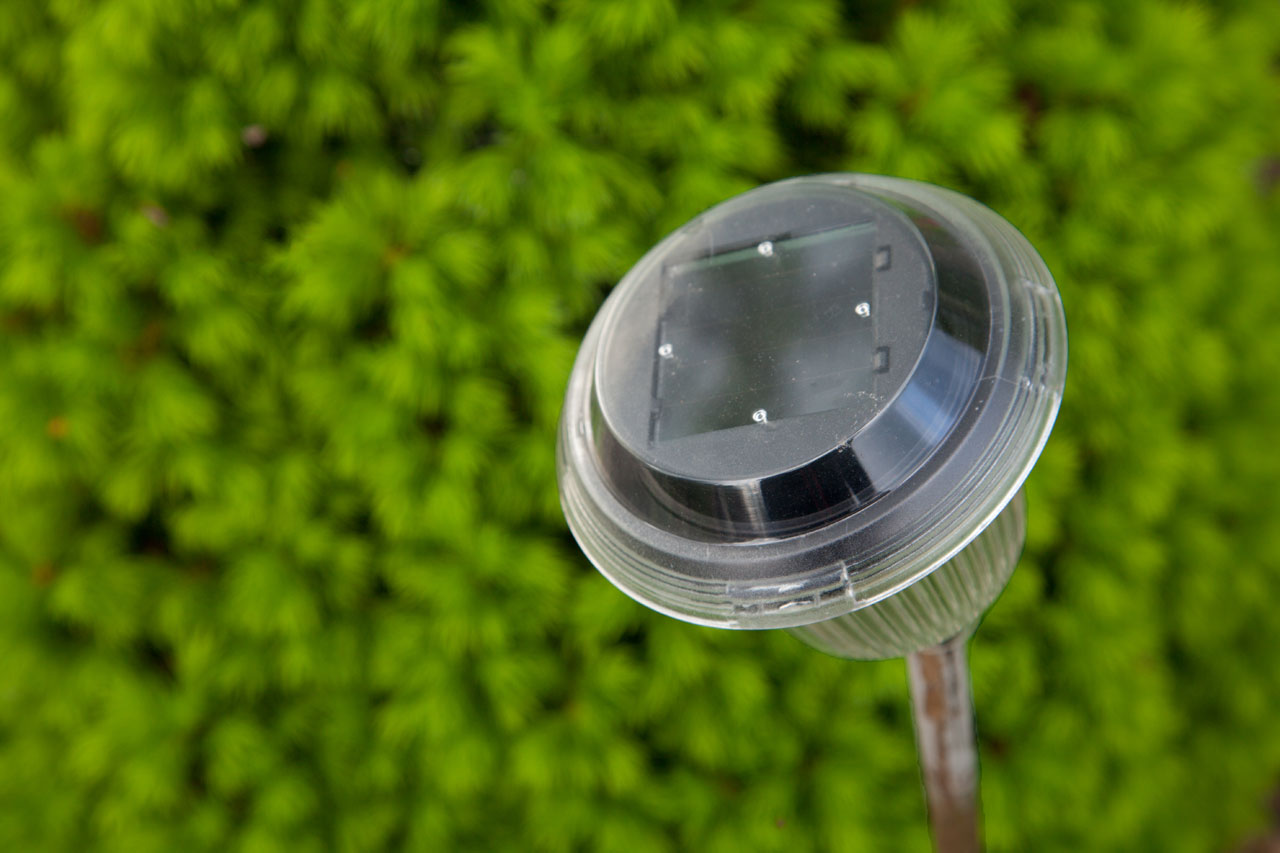
Solar path lights run on a separate electrical grid and are directly powered by sunlight. They can also be smartly controlled to automatically turn on at a specific time.
LED Strip Outline

An exciting way of doing path lighting is to add an outline to your path and nearby structures using LED strips. This unique approach to highlighting outdoor spaces by adding a lighting boundary.
Downlighting
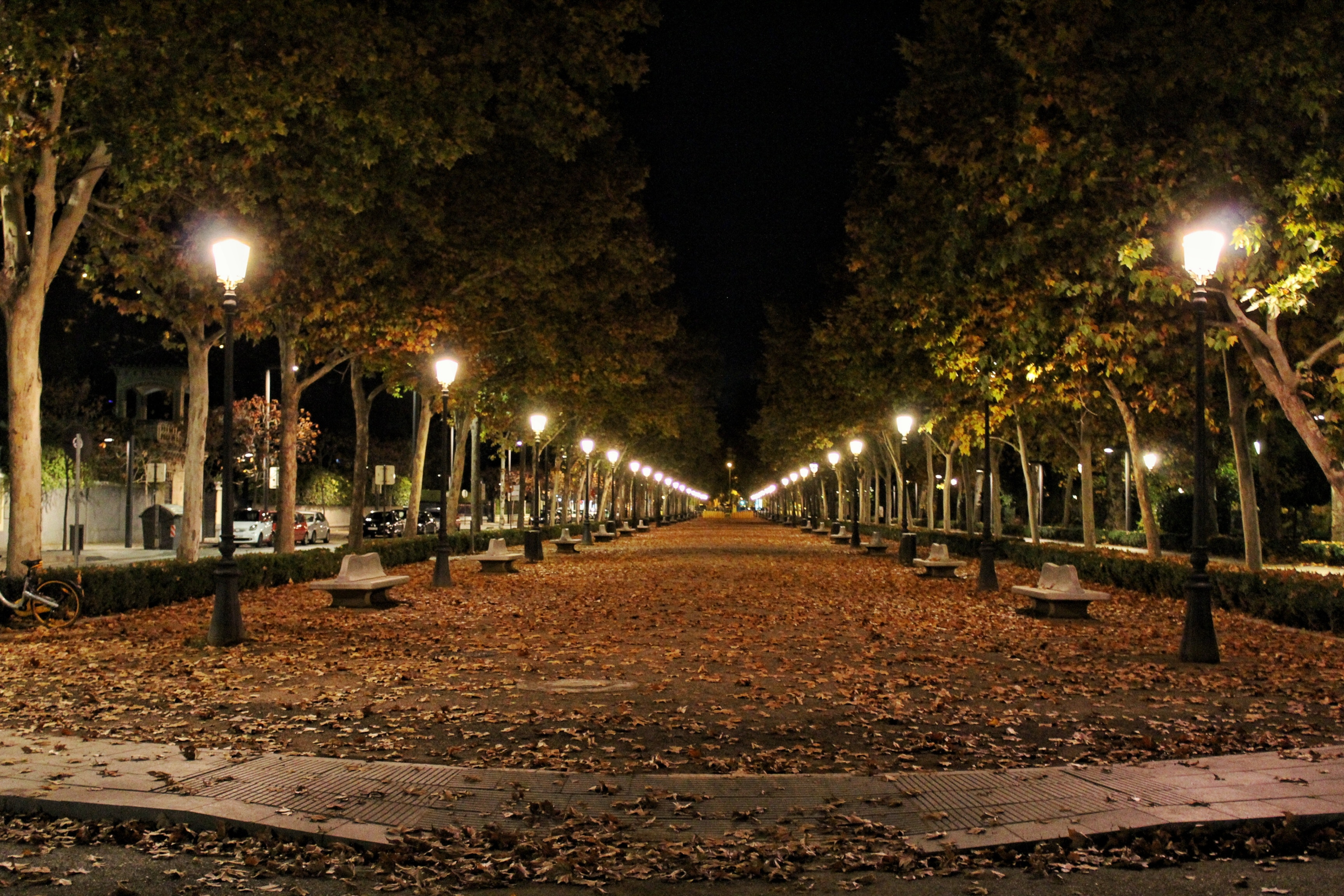
Mount your lights onto nearby trees and structures and aim them towards the ground. This lighting style keeps all the fixtures at a safe height above ground level.
How Much Do Pathway Lights Cost?
Cost is the most crucial element of any lighting project. Going over budget on a project can be a significant hurdle few can cross. The following are a few essential factors that affect the cost of pathway lights.
Cost of Light Fixtures
Light fixtures are by far the most significant cost contributor to any project. Fixtures are deceptively expensive as they don’t have a fixed pricing. Lighting manufacturers and suppliers offer customized quotes based on your order size. Larger orders can significantly reduce the price per light fixture.
Cost of Cabling
Cabling is another significant cost factor that often gets overlooked. The cost of electrical cables varies from gauge to gauge. A gauge is the measure of the internal copper wire thickness, and here higher values refer to thinner wires.
Additionally, you need to consider conduit and shifting costs. Pathway lights require wiring to be safely installed at least 12 inches underground.
Cost of Electricity Bills
Poorly thought-out lighting designs can have electricity costs piling up over the years. This cost doesn’t appear on most people’s radar but should never be underestimated.
Contractor vs. DIY
For smaller projects, you can manage pathway lighting yourself. But for large-scale lighting projects relying on a contractor or some other professional is the way to go.
Contractors are expensive, but they can save you a lot of time and headaches in the long run.
Conclusion
Pathway lighting is one of the most common types of outdoor lighting. It is versatile, flexible, and relatively easy to install. The benefits of good pathway lighting cannot be underestimated. The results cannot be disputed for safety reasons or general outdoor aesthetics.
An illuminated pathway brings out the best in your gardens and front yards. It makes the walk to your house an existing opportunity rather than a dull chore.
Why get Pathway Lights from R&C Lighting?
R&C Lighting is a top-class manufacturer and supplier of landscape and facade lighting. We are devoted to delivering quality products on time and within budget. Our pride and joy is our extensive Quality Testing Facility, which is second to none.
All our products comply with various international health and safety standards. We highly recommend you check out our diverse pathway lighting catalog. Poor quality lights can ruin the look and experience of your outdoor space. Choose a reliable and trustworthy supplier like R&C. To get a price-competitive and personalized quote, Contact us Now!








